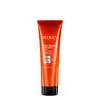What's inside
What's inside
 Key Ingredients
Key Ingredients

No key ingredients
 Benefits
Benefits

 Concerns
Concerns

 Ingredients Side-by-side
Ingredients Side-by-side

Water
Skin ConditioningCetearyl Alcohol
EmollientOrbignya Oleifera Seed Oil
EmollientParfum
MaskingGlycerin
HumectantBehentrimonium Chloride
PreservativeCetrimonium Chloride
AntimicrobialAmodimethicone
Sodium Benzoate
MaskingIsopropyl Alcohol
SolventPEG/PPG/Polybutylene Glycol-8/5/3 Glycerin
HumectantBenzyl Salicylate
PerfumingCitric Acid
BufferingBenzyl Alcohol
PerfumingLinalool
PerfumingTrideceth-6
EmulsifyingChlorhexidine Dihydrochloride
AntimicrobialHexyl Cinnamal
PerfumingGeraniol
PerfumingAmyl Cinnamal
PerfumingCoumarin
PerfumingCitronellol
PerfumingLimonene
PerfumingBenzyl Benzoate
AntimicrobialWater, Cetearyl Alcohol, Orbignya Oleifera Seed Oil, Parfum, Glycerin, Behentrimonium Chloride, Cetrimonium Chloride, Amodimethicone, Sodium Benzoate, Isopropyl Alcohol, PEG/PPG/Polybutylene Glycol-8/5/3 Glycerin, Benzyl Salicylate, Citric Acid, Benzyl Alcohol, Linalool, Trideceth-6, Chlorhexidine Dihydrochloride, Hexyl Cinnamal, Geraniol, Amyl Cinnamal, Coumarin, Citronellol, Limonene, Benzyl Benzoate
Water
Skin ConditioningCetearyl Alcohol
EmollientPropanediol
SolventC13-15 Alkane
SolventVp/Va Copolymer
Cetyl Alcohol
EmollientPropylene Glycol
HumectantGlycerin
HumectantPunica Granatum Sterols
Skin ConditioningTapioca Starch
Argania Spinosa Kernel Oil
EmollientHydrolyzed Corn Protein
Skin ConditioningPanthenol
Skin ConditioningStearamidopropyl Dimethylamine
EmulsifyingHydrolyzed Wheat Protein
Skin ConditioningHydrolyzed Soy Protein
HumectantLactic Acid
BufferingOlus Oil
EmollientGuar Hydroxypropyltrimonium Chloride
Skin ConditioningSodium Phytate
Ethylhexylglycerin
Skin ConditioningLeuconostoc/Radish Root Ferment Filtrate
AntimicrobialPhenoxyethanol
PreservativeCitric Acid
BufferingSodium Hydroxide
BufferingTocopherol
AntioxidantWater, Cetearyl Alcohol, Propanediol, C13-15 Alkane, Vp/Va Copolymer, Cetyl Alcohol, Propylene Glycol, Glycerin, Punica Granatum Sterols, Tapioca Starch, Argania Spinosa Kernel Oil, Hydrolyzed Corn Protein, Panthenol, Stearamidopropyl Dimethylamine, Hydrolyzed Wheat Protein, Hydrolyzed Soy Protein, Lactic Acid, Olus Oil, Guar Hydroxypropyltrimonium Chloride, Sodium Phytate, Ethylhexylglycerin, Leuconostoc/Radish Root Ferment Filtrate, Phenoxyethanol, Citric Acid, Sodium Hydroxide, Tocopherol
Ingredients Explained
These ingredients are found in both products.
Ingredients higher up in an ingredient list are typically present in a larger amount.
Cetearyl alcohol is a mixture of two fatty alcohols: cetyl alcohol and stearyl alcohol. It is mainly used as an emulsifier. Emulsifiers help prevent the separation of oils and products. Due to its composition, it can also be used to thicken a product or help create foam.
Cetearyl alcohol is an emollient. Emollients help soothe and hydrate the skin by trapping moisture.
Studies show Cetearyl alcohol is non-toxic and non-irritating. The FDA allows products labeled "alcohol-free" to have fatty alcohols.
This ingredient is usually derived from plant oils such as palm, vegetable, or coconut oils. There is debate on whether this ingredient will cause acne.
Due to the fatty acid base, this ingredient may not be Malassezia folliculitis safe.
Learn more about Cetearyl AlcoholCitric Acid is an alpha hydroxy acid (AHA) naturally found in citrus fruits like oranges, lemons, and limes.
Like other AHAs, citric acid can exfoliate skin by breaking down the bonds that hold dead skin cells together. This helps reveal smoother and brighter skin underneath.
However, this exfoliating effect only happens at high concentrations (20%) which can be hard to find in cosmetic products.
Due to this, citric acid is usually included in small amounts as a pH adjuster. This helps keep products slightly more acidic and compatible with skin's natural pH.
In skincare formulas, citric acid can:
While it can provide some skin benefits, research shows lactic acid and glycolic acid are generally more effective and less irritating exfoliants.
Most citric acid used in skincare today is made by fermenting sugars (usually from molasses). This synthetic version is identical to the natural citrus form but easier to stabilize and use in formulations.
Read more about some other popular AHA's here:
Learn more about Citric AcidGlycerin is already naturally found in your skin. It helps moisturize and protect your skin.
A study from 2016 found glycerin to be more effective as a humectant than AHAs and hyaluronic acid.
As a humectant, it helps the skin stay hydrated by pulling moisture to your skin. The low molecular weight of glycerin allows it to pull moisture into the deeper layers of your skin.
Hydrated skin improves your skin barrier; Your skin barrier helps protect against irritants and bacteria.
Glycerin has also been found to have antimicrobial and antiviral properties. Due to these properties, glycerin is often used in wound and burn treatments.
In cosmetics, glycerin is usually derived from plants such as soybean or palm. However, it can also be sourced from animals, such as tallow or animal fat.
This ingredient is organic, colorless, odorless, and non-toxic.
Glycerin is the name for this ingredient in American English. British English uses Glycerol/Glycerine.
Learn more about GlycerinWater. It's the most common cosmetic ingredient of all. You'll usually see it at the top of ingredient lists, meaning that it makes up the largest part of the product.
So why is it so popular? Water most often acts as a solvent - this means that it helps dissolve other ingredients into the formulation.
You'll also recognize water as that liquid we all need to stay alive. If you see this, drink a glass of water. Stay hydrated!
Learn more about Water